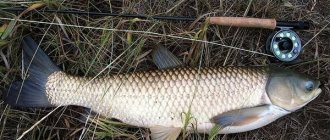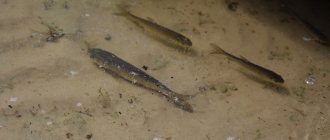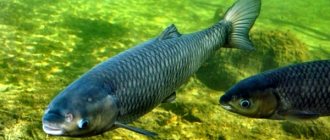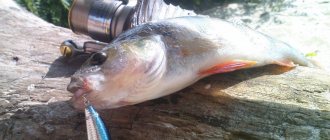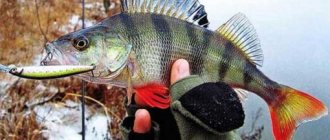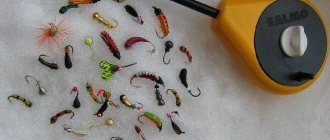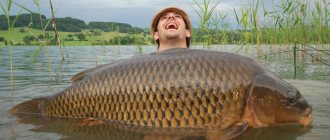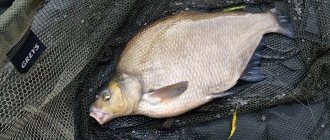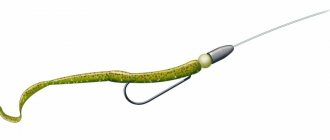Where do cupids live?
Large carps (some individuals reach a weight of 40–50 kg with a body length of 1.5 m) prefer free space, so they are found only in large bodies of water, densely overgrown with vegetation. These are usually power plant reservoirs, large private lakes, or wide river bays.
For fishing to be successful, it is advisable to plan the hunt at a time when most of the vegetation has already died off or has not yet grown, paying special attention to the following places:
- free space in the middle of water thickets;
- not far from the shore in reed or sedge vegetation;
- in shallow water near the shore with well-warmed water.
However, if you want to bring home a catch with a 100% guarantee, then it is better to go to reservoirs specially organized for this.
Did you know? Grass carp entered the water bodies of Russia, Ukraine, Belarus and neighboring countries only in the 60s of the 20th century, after it was introduced from its homeland - East Asia.
Among the main visual signs of the presence of this fish in the lake are the following:
- loud squelching and the appearance of air bubbles on the surface of the reservoir;
- the appearance and rapid disappearance of dorsal fins;
- the appearance of a silvery part of the side or back during rare cupid jumps;
- duck-like excrement.
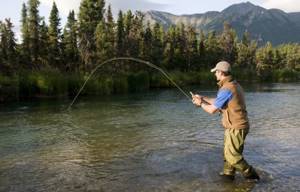
If there is the slightest suspicion about the presence of the specimen of interest in a particular body of water, it is worth casting a fishing rod and trying your luck, having previously armed yourself with suitable tackle and bait.
Criteria for choosing gear
Grass carp is a fish that is far from small and quite weighty, so in order to get a rich catch you need to prepare in advance for this fascinating process. In this case, we are not talking about bait, but about fishing gear; they must be strong and durable in order to hold the fish caught on the hook.
Plug
This gear is practically designed for catching carp, as it creates the opportunity to accurately deliver the bait hanging on the hook to the aquatic inhabitant, and this is not so easy to do, considering that the favorite habitat of this fish is thick, barely passable algae .
The plug, due to its abilities, could be called an ideal device, if we lose sight of the rather high cost that fishermen have set today.
Match fishing rod
White carp can be caught without much effort using a match fishing rod; such tackle will simplify the task of landing this large fish.
At the same time, it is impossible not to mention that this aquatic inhabitant can live at very different depths of the river. In connection with these circumstances, the use of a fast, maneuverable and at the same time barely noticeable float for the fish itself is the key to successful fishing with a large and rich catch.
Feeder
Its use will bring success only in the spring, at a time when the water in the river has already become quite warm, but the vegetation has not yet had time to grow much. The ideal bait when using a feeder would be corn grains or boilies.
Young, recently born cupids, despite their vegetarian taste preferences, will not at all mind swimming to a hook with a maggot or worm. This live bait does not need to be cast to the very bottom; it is ideal to keep it in the middle water column.

Feeder equipment option
Successful fishing for carp on a feeder will only be in the spring; in the summer, this gear is not applicable, since it will simply get entangled in the grown aquatic vegetation.
What does grass carp bite on in the fall?
With the beginning of autumn, all conditions for productive fishing are created: already in September there are more cloudy and moderately warm days, and surf winds are not uncommon. As for the choice of bait for grass carp, despite its “vegetarian” status, at this time the fish likes to feast on animal food, especially chicken liver, crawling worms, bloodworms, maggots, grasshoppers and even locusts. However, one should not exclude the possibility of being caught using traditional summer food in the form of cabbage leaves, peas, bread crusts, tiger nuts, algae, and cucumbers.
We recommend reading about recipes for preparing pink salmon in puff pastry.
Some fishermen successfully use cake or slightly sweetened dough, or prepare floating boilies using vegetable ingredients (from ready-made options, meat and fish baits and specimens with the smell of sunflower oil would be a good solution). To make boilies yourself at home, you will need semolina, corn and bird droppings, mixed in equal proportions (it is better to grind in a blender).

After obtaining the finished homogeneous mixture, add the same amount of soy flour and a little bone flour to it, and to enhance the smell, sprinkle everything with cinnamon, cumin, chopped garlic, anise and pour in a little sunflower oil. To improve the viscosity of the bait, eggs are added to the prepared dough at the rate of 1 piece per 100 g of finished product.
Lures and bait
Mostly plant foods are used as bait : corn, boiled potatoes, pearl barley porridge, seaweed, pieces of young reed shoots, reed stems and even pieces of aloe leaves. When attaching the bait, you must try to ensure that the sting of the hook does not protrude, since the cupid, feeling a sharp sting in its mouth, can spit out the bait and swim away.
Carp fishermen often notice that carp willingly takes carp bait, so it can be used. Boilies and various aromatic oils perform especially well.
Grass carp lives in most reservoirs in Europe; it is well known to fishermen and manufacturers of various baits and baits. Therefore, you can safely use everything that the stores offer.
Bait made from boiled corn with the addition of various flavors performs very well . When feeding, you should not be afraid of overfeeding the cupid.
This fish is extremely voracious and you can expect to use several kilograms of bait for each fishing rod during fishing.
https://youtu.be/gyPr0eF6Tm4
Life hack for fishermen - a powerful bait for catching grass carp
And here we look at the basic techniques for fishing with corn.
What kind of bait is needed
In addition to different types of bait, a real fisherman always has with him suitable feeding, the main task of which is to attract as many fish as possible to the place where you are fishing. In the case of grass carp, the optimal solution for such a product would be a mixture of 3 kg of boiled corn, a package of purchased food for carp fish, 3 kg of pearl barley and peas, several handfuls of animal components in the form of bloodworms, maggots, and worms.
Important! If you have feeding, you can throw it into the water even while fishing, but only without overfeeding the fish. There is an opinion that the sound of squelching water attracts it to the place of sound.
You can also add boilies here, thoroughly mixing everything until smooth. In total, you should get at least 1 bucket of fertilizer, which is poured into the water about a day before the intended fishing. If you have time, you can feed the fish for several days and only then proceed to fishing.
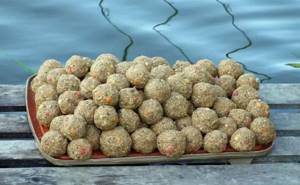
Fishing for grass carp in October
October fishing for carp is unpredictable. Schools of grass carp move closer to the bottom depressions in which the fish, falling into suspended animation, experience a period of freeze-up. In non-freezing reservoirs, carp feed on the remains of aquatic vegetation throughout October. Part of the diet consists of aquatic insects that did not have time to burrow into the mud.
The direction of migration of schools of grass carp can be determined by the floating mucus, which is clearly visible in clear water in the form of threads. On well-established sunny days you can count on a good catch.
To increase your chances of catching carp in October, you need to take care of the bait. It is better to prepare in advance for catching grass carp in October. In 2-3 days, bait is thrown into a promising place. A dusty bait is used, which is tied into a mesh material. A piece of nylon stocking is suitable as a bait bag.
On the day of fishing, bait is cast. Complementary food is delivered using a feeder rod or a special, pre-prepared slingshot. After delivering the bait to the fishing spot, there is no need to rush to throw out the gear. The slaps of the thrown bait on the water alert the grass carp, but the need for food forces it to return to the baited area. This usually happens after at least half an hour.
Tackle for catching carp
When planning to catch grass carp, it is advisable to prepare bottom-type gear, although some fishermen manage to bring home their catch using a regular long fly rod, which complicates the fishing process. When choosing a float fishing rod, the best solution would be match gear equipped with a spinning reel, possibly with a baitrunner (optimal spool size 3000–3500).
Did you know? To increase weight by 1 kg, each fish needs to eat 20–50 kg of plant food.
Since cupid is a strong fish, many fishermen have a well-founded desire to use braided fishing line. However, a significant disadvantage of this material is its low shock-absorbing properties, without which it will be very difficult to get fish out of the reservoir. The optimal solution in this case would be to use monofilament fishing line with a diameter of at least 0.3 mm.
When it comes to hooks, fishermen often choose products designed for catching carp, but if possible, it is better to purchase options that are curved to the side rather than in the middle. When caught in the fall, grass carp resists much more strongly than in the summer, which is why it is more difficult to catch (fish strikes are more common).
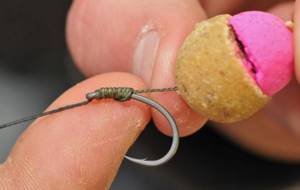
The weight on the fishing line is selected taking into account the strength of the current in a particular place of the reservoir and its depth. If you plan to use feeders, you can experiment with their type: in some cases the classic “cage” is perfect, while in others a product with a “method” design will be more justified. Also, when fishing for carp, a hair rig will be productive.
The peculiarities of the life activity of this particular type of underwater inhabitants determine the requirements for choosing a float for a fishing rod. Since cupids do not spend all their time at the bottom of reservoirs, they can feed in different layers of water, which means that it is most advantageous to use a sliding large float that is clearly visible from the shore. For bottom gear, you can use a feeder or picker (only when fishing on a pond). The test of the feeder rod should reach 40–80 g, and the equipment can be used both with and without a feeder.
Important! If you are going fishing in the fall, choose quiet and calm days in October, as little windy as possible.
Fishing for grass carp in November
In November, grass carp, after systematically recurring night frosts, becomes inactive and stops actively searching for food. But in some central and southern regions, November still delights with sunny days and calm weather. These rare gifts of nature allow you to fish for carp. Catching grass carp in November is an activity for optimists. It is necessary to determine the area in which fish may be present. To determine promising fishing spots, you should use a fishing echo sounder. The bait, then the bait, are thrown into a promising place.
In November, carp does not rise to the surface, so bottom gear is used to catch it. The bait should create a dust cloud. During periods of fish passivity, you can attract it to the fishing site with the help of technoplankton.
Techniques for catching carp in autumn
The first thing to consider when “silent hunting” for carp is that it must be quiet. This fish is very shy and quickly swims away at the slightest splash of water or even loud sounds near the shore. In addition, there are a number of other recommendations to make fishing as productive as possible.
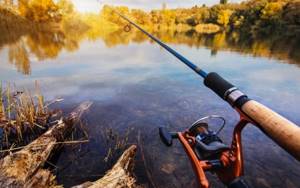
First of all, this list includes the following tips:
- Feed the fishing area in advance by adding bait for several days.
- When throwing the bait, try to direct it slightly away from the place where the schools of fish are supposed to be, and then slowly pull the bait in the right direction (the slamming of the gear on the water can scare away the carp, and it will definitely not bite).
- In between retrievals of the bait, you can easily twitch the rod, playing with it and making the bait attractive to the fish.
- After the carp grabs the hook, the hook should be just as sharp and fast, not allowing the fish to slide to the side.
- When fishing for caught prey, it is advisable to use a landing net, otherwise there is every chance of being left without a catch.
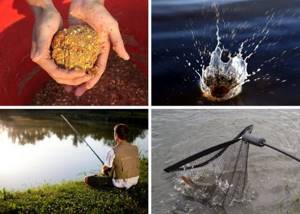
Almost all actions performed (except for hooking) should be as smooth and soft as possible so that the caught fish remains calm and twitches less on the hook.
In general, fishing for carp is in many ways reminiscent of fishing for carp, with the only difference being that we are talking about larger, hardier and finickier fish, so to get a good catch you will have to be patient and spend a little time on preliminary feeding, not to mention preparing the most suitable gear. Only in this case will the carp be caught well even in autumn.
Where and when is it caught?
You can start fishing for grass carp as early as May and continue until October. This is a heat-loving fish that is active only when the temperature in the reservoir exceeds 10 degrees. At lower temperatures, the carp goes to its wintering place and does not show any feeding activity.
Grass carp will be caught best when its appetites have grown and there is little aquatic vegetation. This happens in the spring, when there are still few plants, and in the fall, when the plants die.
Cupid is a very voracious fish , it can eat more in a day than it weighs itself, so if there is a lack of food, it will actively move around the reservoir.
Cupid does not like muddy water , so you should look for it only in places where there is aquatic vegetation and clear water.
It has been noticed that this fish, during periods of gluttony and lack of its natural food, can feed on food that is unusual for it; it can be attracted by the same baits and baits used for catching carp and silver carp.
The best baits and lures
Having prepared the tackle, you should also think about the bait, only in this case the fish will certainly fall on the fisherman’s hook.
As for taste preferences, it has long been noted that cupid is especially partial to the sound of falling edible powder. Many experienced fishermen have repeatedly noticed that if the silence that has stood for a long time in the water surface is broken with a ball that can be eaten, then grass carp will soon notice it and get hooked. Therefore, when going fishing, you should not skimp on bait; you need to take it in large quantities.
When preparing “delicious rounds”, it is worth taking into account the fact that grass carp will swim up to it much faster if, in addition to the sound when it hits the water, it also leaves behind a trace in the form of a vertical column.
Animals
So, the following are ideal as animal baits:
- Earthworm or dung worm.
- Locust (loves very much).
- Livers of a wide variety of birds.
- Green grasshoppers.
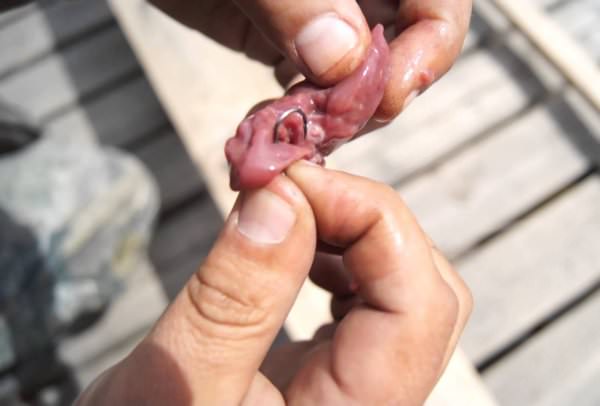
Liver
Crawls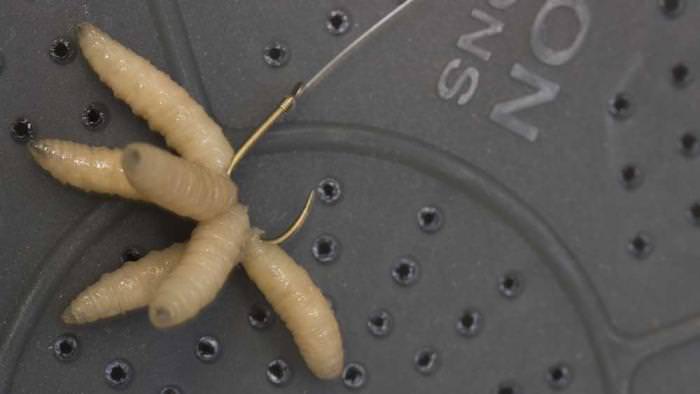
Maggot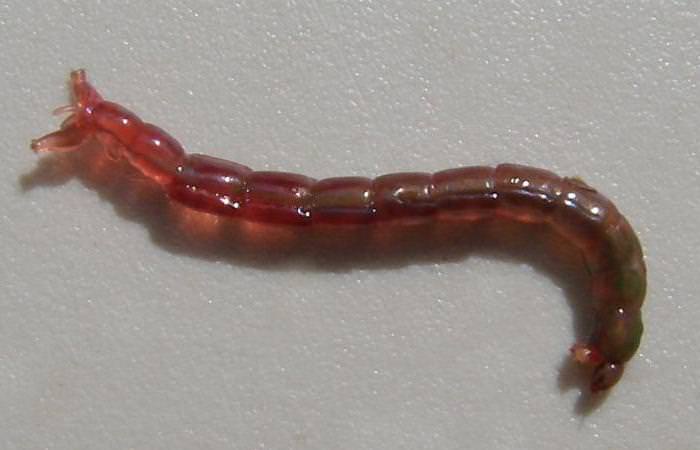
Bloodworm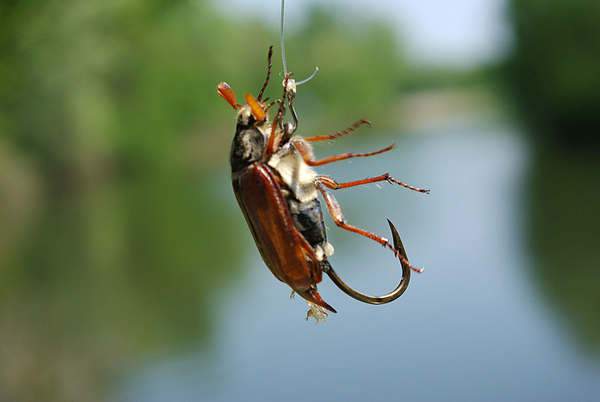
Chafer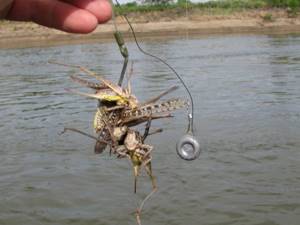
Locust - Maggot.
- Bloodworm.
- Crawling out.
All these baits, as well as greenery, will certainly attract an aquatic herbivore.
Vegetable
Amur is famous for its herbivory, but nevertheless it is worth on greens only in the second half of spring and at the very beginning of summer , at a time when nature is just awakening from its winter sleep.
During this period, the fish have not yet enjoyed their favorite food, and besides, there is not much of it; if in these conditions you attach green bait to a hook and lower it into the water, it will not keep you waiting long.
Preparing bait for carp in this spring-summer period will not be difficult; both reeds and any other greenery that completely covers all garden plots without exception will do.
Of the vegetables, the prey loves most young , just ripe cucumbers , which emit a unique aroma. The key point in this case is to use young cucumbers; the fish will never swim to bitter vegetables that have begun to turn yellow. For cucumber bait, both the cucumber itself and its bright green peel are suitable.
In order to attach a cucumber to a hook, it is recommended to cut it into small cubes and place them on the hook, hiding its end in the vegetable so as not to spook the fish with the visible tip.
Regular boilies
Grass carp among fishermen is considered prey with rather complex taste preferences. However, in principle, it is not so difficult to please this fish: you can also prepare ordinary boilies .
You can make small balls using the following ingredients:
- Flour.
- Eggs.
- A few special dyes.
From all this you need to make a mixture, and then roll it into 3-centimeter balls and dry them. At this point the delicacy is considered ready.
Tips from experienced fishermen
Blue field workers with extensive experience, who have already caught more than one cupid in their lives, advise:
- Be sure to use a bite activator. This modern mixture, due to the pheromones it contains, will increase the appetite of the fish.
- When fishing, use gear that is highly sensitive, so that even the slightest touch of a fish to the bait will not go unnoticed by the fisherman.
- When choosing bait, it is advisable to opt for those varieties that contain pheromones .
